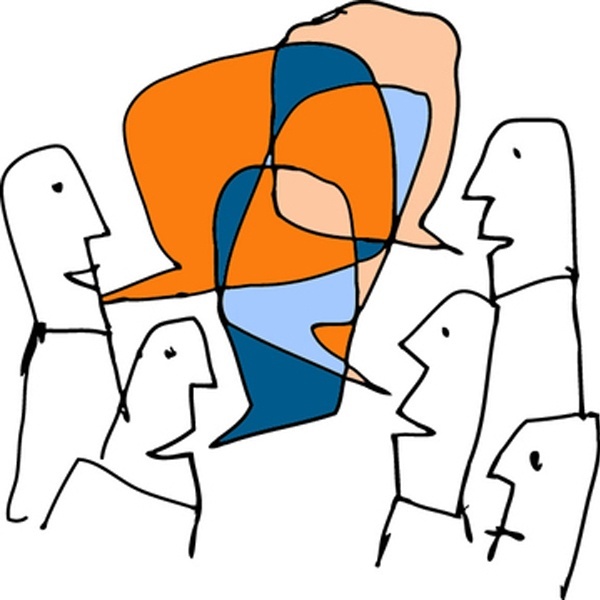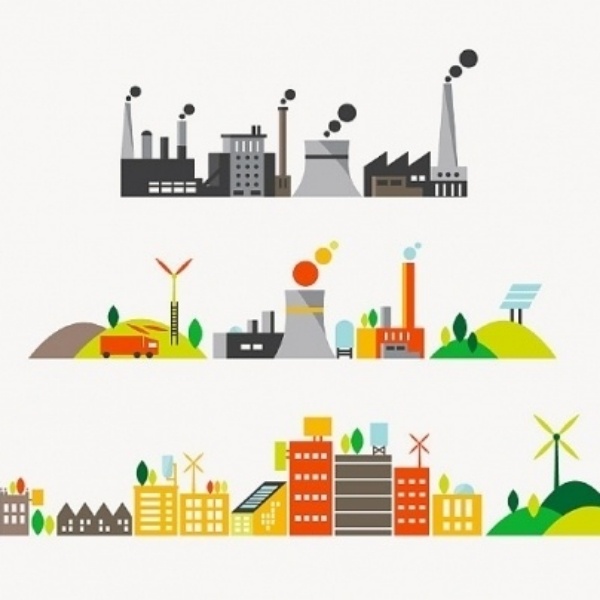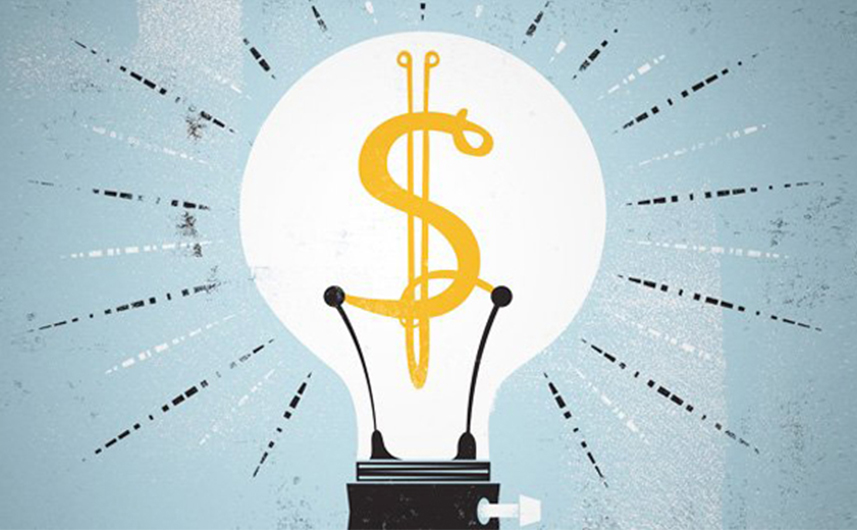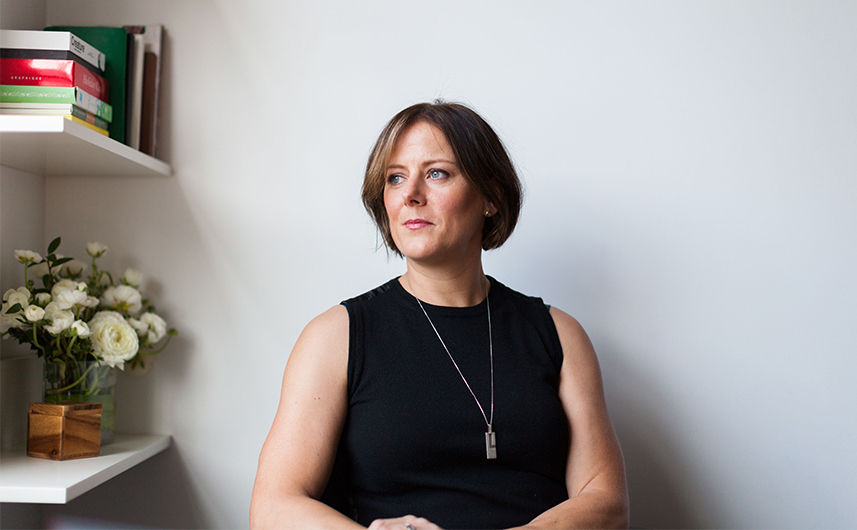As a project manager at Emotive Brand, Shelby Tramel is known for two things. First, she brings clarity and expertise to every project she touches. And second, she often comes into the studio dressed head-to-toe in Lycra cycling gear, clutching some homemade drink that looks more like cement than a smoothie. We all knew she was a fierce competitor, but it wasn’t until recently that we learned just how elite she is. (Though it does explain why she often eats two or three breakfasts.)
We sat down with Shelby to discuss her athleticism, future goals, and how lessons from cycling can be applied to the world of brand strategy.
When did you start cycling?
It all started in May of 2015. That was the month of my very first race. I was living in New York City at the time, and my friend asked me to join in. I knew how to handle a bike, how to pedal, how to turn a corner. But as far as riding in a tight, competitive pack, that was definitely new to me.
Naturally, the race didn’t go as planned. I got dropped from the pack, got lapped, but I kept riding anyway. I almost had an asthma attack, but strangely, I didn’t find it discouraging. Even as my heart was beating out of my chest, I remember admiring all of the strong women around me. I didn’t quit, but I ended up getting a Did Not Finish (DNF) because I had to get pulled from the race.
When did you arrive to the West Coast?
About a month later, I moved here in June of 2015. I spent a few months riding around and meeting people. They say that riding in NorCal makes you stronger because the geography is much more difficult, and they’re right. The racers here are known to be among the strongest in the country.
At what point did you notice you were making significant progress?
In 2016, just around mid-season, I started winning everything as a category four racer. For the uninitiated, the ranking is 5, 4, 3, 2, 1, and professional. To advance, you need to acquire a certain amount of points, which are earned through placing, winning, etc. The fact that I was winning at that level allowed me to quickly upgrade out of that “Beginner’s beginner” to “Alright, this is someone with potential.” After coming in first at Tulsa Tough, I had that oh shit moment of thinking, “I’m becoming an elite racer.”
Are you a naturally competitive person?
Surprisingly, no. I’m not really a competitive person. I’m not prideful, I don’t have a huge ego. In racing, it’s more an internal battle as opposed to beating other people. I’m always wanting to prove to myself that I’m capable and strong. It’s a constant internal dialogue.
Cycling is 90% mental. You have to act a lot on instinct. There are a lot of racers who think too much, who over analyze, and it ends up backfiring on them. I try not to think in races. I let my body react and use my instinct.
What are your goals this year?
I want to upgrade to a category one racer. I’m aiming to be one of the best elite women racers in NorCal. And I’m striving to get pro-level experience that gives me a taste of what that lifestyle is like.
Your specialty is criterium racing, which consists of racing several laps around a closed circuit. Why is this your favorite?
My background is as a gymnast, and I think the strength you acquire in the gym lends itself to this kind of racing. It’s a short, punchy, fast, and high-power race. Also, I think it’s the most strategic kind of racing.
With crit, you ideally have teammates. There’s one dedicated person, called a sprinter, who is going to make a mad dash at the end. However, throughout the race, other teammates have jobs to help you. There are attackers, people who quickly separate from the pack to try to initiate a chase. It’s a strategic way to tire out the pack. When it comes to strategy, it’s always better to work as a team.
In the final lap, you form what’s called a lead out. Everyone lines up behind each other with the sprinter at the very back, which is typically my role. The person in front pushes as long and hard as they can, then pulls off for the next person in line. One by one, they pull that sprinter to the very end so they can conserve energy and burst to victory.
It seems like a lot of these tactics translate into your life at work. Do you feel there’s a crossover between cycling and brand strategy?
Absolutely. In racing, the strongest person hardly ever wins. The person that wins the race is the person that can react, develop a strategy, follow through, and know which moves are worth going with.
Someone might attack, you have to look at the person and evaluate, “Are they actually going to get away? Is it worth the energy?” I’m not the strongest person out there, but I race very efficiently. I know how to conserve energy, strategize, read the field, and make it count.
All of those skills translate to brand strategy and project management. With both, you have to stay composed while also making critical decisions. You can’t waste people’s time – or your own. And perhaps most importantly, you have to be able to follow your instinct. If you play by the rulebook all the time, you’re not going to win. Usually, you start off with a strategy, but things change mid-race, mid-project, mid-proposal. You must be able to adapt to succeed in the end.
If cycling at this level has taught me anything, it’s the importance of balance. For me, balance is being able to be successful in my athletic career and business career. Everyone has their outlet, but for me, there’s no better way to start the day than being at the top of Grizzly Peak and seeing the sunrise. It’s a moment of calm that can’t be beaten.
As you continue to advance through the ranks, is there any advice you wish you could give to that younger version of yourself in NYC?
Just have fun. There are very few people who start off good from the get-go. It took a lot of time and hard work to get to where I’m at – and I had a very quick ascent compared to other people! I don’t take that for granted. Not being good bothered me, it lit a fire beneath me. Still, it never stopped being fun.
It’s the same with work. Keep things fun. It’s very important to rest and take breaks, but also align yourself with a support system that sees the value in what you do. When you work somewhere that encourages personal development, you’re going to work harder, have a fresh perspective, and set new goals for the future.
Emotive Brand is a brand strategy and design firm based in San Francisco.

















